Great Aunt Alice, the Blue-Backed “Speller” & The Vixens in the Bramble
Ruminant With A View
“Alice gave my mother the gift and power of literacy. Of solid if simple Upstate-Carolina-Settler stock, my mother had great fluency in English: she was a natural scholar and a natural writer. What Alice bequeathed her came straight down then to me, along with a worn, battered ‘Speller’ (used by my Great Aunt to teach and, obviously, used by so many other Townville students before my mother came to own it).”—Elizabeth Boleman-Herring
By Elizabeth Boleman-Herring
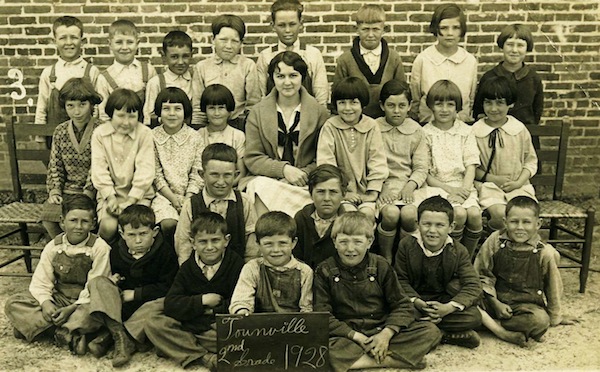
BRIDGE & TUNNEL New Jersey—(Weekly Hubris)—4/14/2014—On the flyleaf of my Great Aunt Alice’s, and only later my mother’s “Blue Backed Speller,” two names are either erased or crossed out (Ella Morgan, 1918, and Cordelia King, 1919), and a third bears two dates.
Did “Maude Hunter, 1920 and 1921,” repeat a grade? I cannot know, but it is certainly in her beautiful, cursive hand that this arresting aphorism is written: “We build the ladder by which we climb.”
Perhaps, though, Miss Hunter simply used the traditional grammar book of late-19th-century America during both her junior and senior years of high school in Townville, South Carolina, for on the last page of the Speller she writes: “Class of ’21, The Builders.”
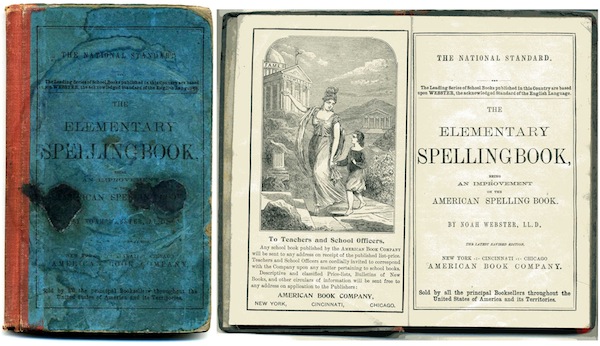
My mother, Elizabeth Janette Boleman, was born at home in Townville, in the year 1920, the third daughter and next to last child of five in a rambling, white clapboard Victorian house.
She and her little brother Webb, named for their eldest sister’s physician-husband (who, in fact, delivered both his own wife and my mother), were unexpected, late additions to Lon and Abalena’s family. Willie Sue (reputedly named after one of my grandfather’s sweethearts) and Inez, decades older than Beth and Webb, might have been their aunts. Lonnie Jr., the oldest son, was distant, chilly, and independent when Beth was still in bare feet and a cotton jumper.
I know exactly what Mother and Webb looked like, as one photograph survives: two terribly shy little children, piled one atop the other, sit in the dry and powdery soil beneath a Townville pecan tree, one of an allée before my grandparents’ home. My mother’s black hair has obviously been cut by someone who held a mixing bowl over her head before working the scissors; Webb, in motion at two or three, is slightly out of focus.
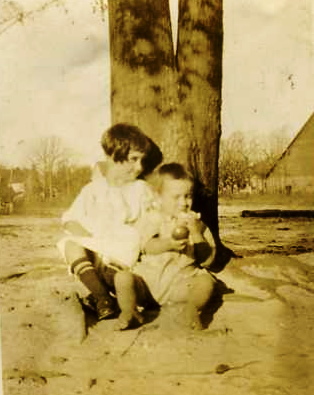
My uncle died, as a very young man, long before I was born, and remains, to this day, out of focus for me, as is so much there in Townville.
Because I came along so late, myself (my mother gave birth to me at 31, and her early South Carolina childhood was never a favorite topic of conversation), I have had to do some sleuthing to tease out her family truths and testaments.
A lot of what was never discussed persists though, plain as day, in small black and white photographs from the late 19th and very early 20th centuries. I know, for example, that Aunt Alice—presumably a Maiden Aunt, the sister of my mother’s mother, Abalena Smith Boleman—lived with Lon and Lonnie, Willie Sue, Inez, my mother, and Webb in the big white Townville house, which I knew well until it was sold, with almost all its contents untouched, in the mid-1970s.
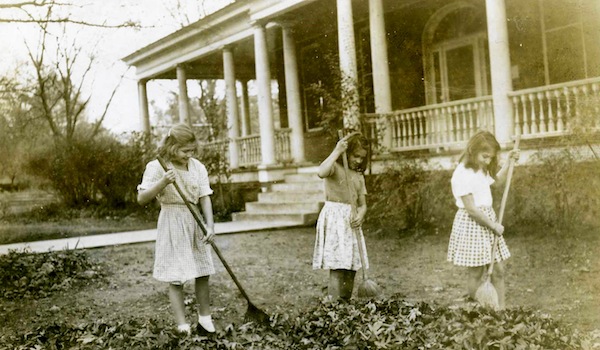
I had only a few hours to retrieve what, for me, were family heirlooms from the old homeplace—my grandfather’s wooden trunk, stuffed with letters; Civil War tintypes of the Smith and Shirley men; a half-strand of “Indian” beads; needlepoint samplers; Aunt Alice’s slip and glasses—before the new owners arrived.
From the cut of Aunt Alice’s lace-trimmed petticoat—her full-length cotton shift, really—I know she must have been tall and, eventually, full-figured like the rest of her sisters after middle age.
But, in an early photograph, she sits in floor-length skirts in a vast stationary porch swing where, serious and slender, she has been vain enough to remove her spectacles for the photographer.
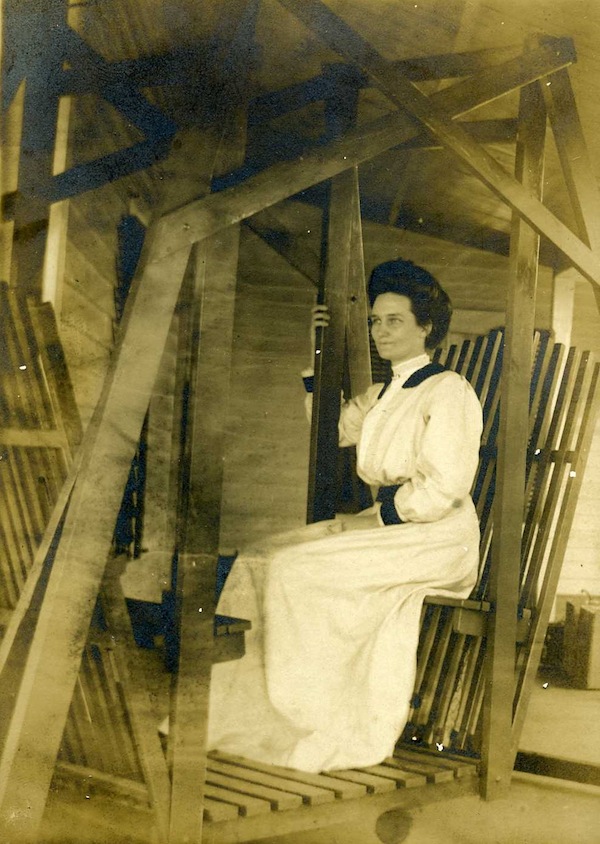
I know almost nothing else about Alice . . . except that it was she who, very early, took on the task of teaching my mother to read, write, and reason, setting her on a sure course to becoming Valedictorian of her high school class, c. 1937. (Recently, I sent the tiny gold pin that commemorates that accomplishment to her namesake, Beth Boleman Bliss, Webb’s daughter.)
Alice gave my mother the gift and power of literacy. Of solid if simple Upstate-Carolina-Settler stock, my mother had great fluency in English: she was a natural scholar and a natural writer.
What Alice bequeathed her came straight down then to me, along with a worn, battered Speller (used by my Great Aunt to teach and, obviously, used by so many other Townville students before my mother came to own it).
On Page 7, one of the multiple Webster-clan authors states: “The repetition of the orthoëpical mark has been omitted as needless in a succession of two or more words having the same vowel letter and sound.”
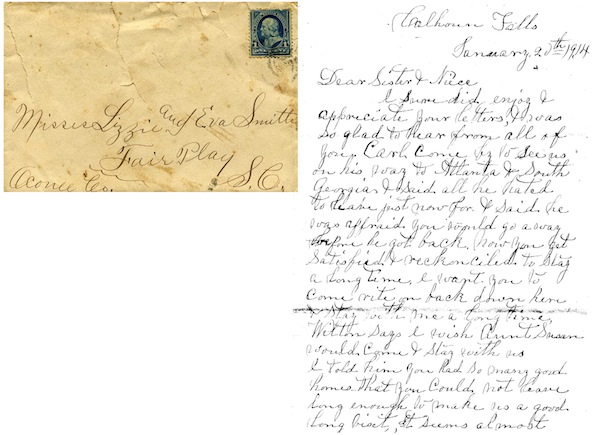
My mother, as a teenager in a tiny hamlet in which her father (nicknamed “Rocky,” after John D. Rockefeller) owned—before The Great Depression—Townville’s first Model T, would have taken such words as “orthoëpical” in stride.
This is a certainty that stuns me, sitting here with my cranky Dell laptop, my access to Google, my WiFi, my smattering of book-learning.
Mr. William G. Webster (Noah’s son and the Speller’s co-author, presumably) states in the book’s Preface : “. . . [T]his little book is so constructed as to condense into the smallest compass a complete SYSTEM of ELEMENTS for teaching the language; and however small such a book may appear, it may be considered as the most important class book, not of a religious character [how little we rural Americans have changed, William, in 150 years], which the youth of our country are destined to use.”
I am living, literate proof of the Websters’, Aunt Alice’s, and my mother’s pedagogy, for I actually believe that, were it not for the long hours my largely unwanted and unloved mother spent with her spinster aunt, most probably seated at my grandfather’s little planter’s desk, with Alice in the rush-bottomed, straight-backed chair—both of which pieces of furniture survive, and stand about eight feet from where I type—I would never have been a writer, my mother would never have read Shakespeare to me in my crib, and a certain slant of rhyme and sureness of style would never have come down to me.
Through the SYSTEM of the Speller, one learns to spell and pronounce a great many words, but one also learns to read, and to mimic the rhythm of a great many odd sentences. Odd, but rich. On Page 113, for example: “Gregarious animals are such as herd together, as sheep and goats. Salubrious air is favorable to health. Stones are remarkable for their immaleability. A valetudinarian is a sickly person.”
Whoever compiles the “Findings” section at the very end of Harper’s magazine must be the grandchild or great niece or nephew of someone who “went to school” in the Speller.
If one reads through the entire text—all 174 pages of this Book of Common Prayer designed for those attempting to infect the unwashed young with literacy a century ago—one hears echoes of everything exemplary in our piebald oral and written (if misspelt) literary tradition. The sample sentences and fables, even the editorial asides, evoke everyone from the poet of “The Western Wind,” to those who created the King James Version, The Bard, Ben Franklin, etc., etc.
Noah Webster’s Wikipedia entry reads: “Noah Webster, Jr. (October 16, 1758—May 28, 1843), was a lexicographer, textbook pioneer, English-language spelling reformer, political writer, editor, and prolific author. He has been called the ‘Father of American Scholarship and Education.’ His blue-backed speller books taught five generations of American children how to spell and read, secularizing their education. According to Ellis (1979) he gave Americans ‘a secular catechism to the nation-state.’ Nonetheless, after a religious conversion in 1808 (during the Second Great Awakening) he began to introduce many biblical allusions in his speller. Webster’s name has become synonymous with ‘dictionary’ in the United States, especially the modern Merriam-Webster dictionary that was first published in 1828 as An American Dictionary of the English Language. He is considered one of the Founding Fathers of the nation.”
The fables recounted at the very end of the Speller are all, indeed, secular, and might have come out of Joel Chandler Harris (or Chaucer, or Aesop, for that matter). They would have been perceived as a cool tonic by my mother, whose own religious conversion occurred at Townville Baptist Church when she was 14, but for whom literature and writing comprised a sort of separate peace, located somewhere beyond the pale of her faith.
She lived, comfortably, with that inner schism, for 72 years, and I wonder, now, if for Aunt Alice as well “the word” was never a lesser thing than “The Word.”
Still, the fables recount the adventures and teachable moments of, for the most part, un-gregarious, un-herd-able, if anthropomorphic animals. “Fable VI, The Fox and The Bramble,” reads:
“A fox, closely pursued by a pack of dogs, took shelter under the covert of a bramble. He rejoiced in this asylum, and for a while, was very happy; but soon found that if he attempted to stir, he was wounded by thorns and prickles on every side. However, making a virtue of necessity, he forebore to complain, and comforted himself with reflecting that no bliss is perfect; that good and evil are mixed, and flow from the same fountain. These briers, indeed, said he, will tear my skin a little, yet they keep off the dogs. For the sake of the good, then, let me bear the evil with patience; each bitter has its sweet; and these brambles, though they wound my flesh, preserve my life from danger.”
The hall floor in the Townville house is naked of paint or shellac. It has been years since there was money for such fancies. The oak desk, with its fragile hinges, is large enough for only some 20 books: the Bible, Mama Abalena’s “doctor book,” with its trove of home remedies for diphtheria and ague; Shakespeare’s tragedies, perhaps; collections of sermons . . . and the blue-backed Speller.
Beth, with her black-brown eyes and blue-black hair, stands leaning into her aunt, who is seated, straight as a caryatid in the ladder-backed chair. The Speller is open to Page 16:
ba be bi bo bu by ea çe çi eo eu çy . . .
(No wonder, later, French came so easily to my mother.)
On these sweltering, silent afternoons, when Lonnie and Willie Sue and Inez are off in the automobile, Mama is lying down for a nap, the baby, Webb, by her side, Beth experiences the only true happiness she will know until she elopes, at 19, with her college sweetheart, and never, ever, returns to Townville.
Alice, her brow serene, stranded in this house like a muse, her gold-rimmed specs high on her nose, holds the quiet, attentive child near. Despite the heat, she does not push the girl away, but shares the page, intoning, “Go on, by me, it is, is he? Go up, to us, to be, I am.”
Go up. To us. To be.
My mother was so lonely, so solitary, so isolated in her intelligence as a child that she invented invisible nurturing friends—Miss Sippi and Miss Loane—to whose house she would repair for high tea (a tale for another time).
But, for a while, the time of Aunt Alice and the Speller, Beth was seen and heard by someone flesh and blood; and allowed to shine.
By the time that, some 25 years later, she gave birth to her only child, also a daughter, almost nothing tangible remained of that early life of privation in the Deep South. I have the Speller, a half-strand of beads I believe must have belonged to my Cherokee grandfather, Papa Boleman, Aunt Alice’s shift, and a simple desk and chair: the legacy of the loving, literate vixen—and her aunt—in the bramble.
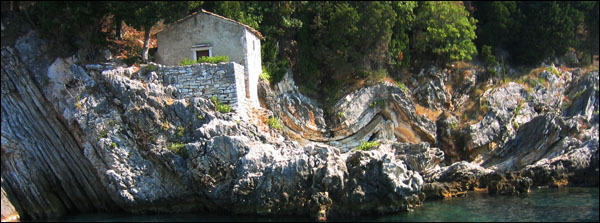
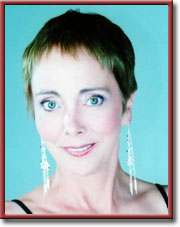

2 Comments
Fern Driscoll
Your portrait of your mother and Aunt Alice is beguiling – I want to know more about both of them… that’s what good writing does, isn’t it? Leaves us wanting more!
Elizabeth Boleman-Herring
Fern, these pieces are coming out/through me, well, piecemeal, but I’d love to write a longer work titled something like “Out of Townville.” Thank you so much for reading me, us, and for the kind words. Elizabeth